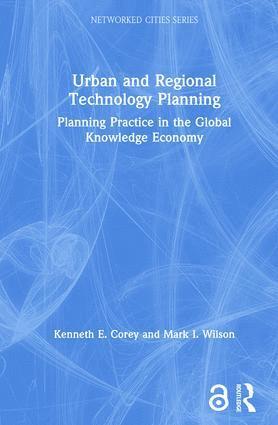
Fler böcker inom
- Format
- Inbunden (Hardback)
- Språk
- Engelska
- Serie
- Networked Cities Series
- Antal sidor
- 288
- Utgivningsdatum
- 2006-05-08
- Förlag
- Taylor & Francis Ltd
- Dimensioner
- 240 x 160 x 20 mm
- Vikt
- ISBN
- 9780415701402
- 580 g
Urban and Regional Technology Planning
Planning Practice in the Global Knowledge Economy
Inbunden,
Engelska, 2006-05-08
2554
- Skickas från oss inom 7-10 vardagar.
- Fri frakt över 249 kr för privatkunder i Sverige.
Finns även som
Passar bra ihop
De som köpt den här boken har ofta också köpt Meeting the Universe Halfway av Karen Barad (häftad).
Köp båda 2 för 2929 krKundrecensioner
Har du läst boken?
Sätt ditt betyg »
Fler böcker av författarna
-
Global Information Society
Mark I Wilson, Aharon Kellerman, Kenneth E Corey
-
Wandering Significance
Mark Wilson, Mark Wilson
-
Explanatory Item Response Models
Paul De Boeck, Mark Wilson
-
Dictator
Mark Wilson
Övrig information
Kenneth Corey is Professor in the Department of Geography and the Urban and Regional Planning Program of Michigan State University. Mark Wilson is Associate Professor in the Urban and Regional Planning Program of the School of Planning, Design and Construction and the Department of Geography at Michigan State University and also serves as a research economist with the Institute for Public Policy and Social Research at MSU.
Du kanske gillar
-
Peak Human
Johan Norberg
Häftad -
Empire of AI
Karen Hao
Inbunden


